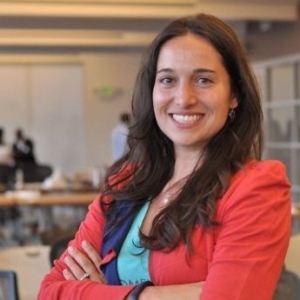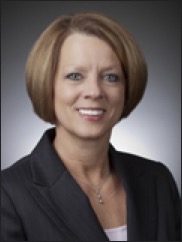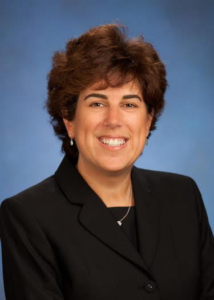 Hilary Packer has found that many women believe they need a five- or 10-year career plan, but she is proof that there’s another way: her career has worked out well even though she didn’t plan each step along the way. “You have to know yourself and whether you want to stay with what you’re doing or try something new.”
Hilary Packer has found that many women believe they need a five- or 10-year career plan, but she is proof that there’s another way: her career has worked out well even though she didn’t plan each step along the way. “You have to know yourself and whether you want to stay with what you’re doing or try something new.”
After studying computer science at the University of Michigan, Packer earned her graduate degree and then began her career in financial services – celebrating 20 years in the field and 10 years at Goldman Sachs this August.
Though she spent her 10 years prior to Goldman Sachs at three different firms, it was primarily with the same team which moved firms as a unit. During those years she specialized in front office trading systems for equities and built excellent relationships with her two previous managers. “We are friends to this day, and they were great for my career, offering me amazing opportunities. But I realized they were championing me for less technical client-facing roles because I work well in that high-pressure, fast-paced environment, and at the time I wanted to alter my path and manage a development team.”
She decided to send her resume to Goldman Sachs for that type of job, and realized it was the perfect fit.
“I loved being on the trading floor in the thick of it,” she says of her first positions at Goldman Sachs, working with trading systems and equities technology. She spent the next seven years in different roles within equities technology, including swaps trading, electronic trading, client-facing work and order management.
Packer says she then put her hand up to try something different than equities technology and was told she would be great at asset management technology – she took the plunge and found the buy-side to be a fascinating change.
Forging A New Path through Technology
After learning that role, she was ready for something radically different, and that’s when she moved into her current role in social and collaboration technology, building platforms that are both traditional and innovative.
“It’s an exciting opportunity to be really connected with what’s going on in the world of social media and how we can apply it internally.”
For example, she has worked on an internal blogging platform that just celebrated its two-year anniversary, and she was proud to take a moment to see how many people had been connected through it and how many posts had been shared. “It really has elevated the power of the crowd within Goldman Sachs; we have so much knowledge to share that makes people more productive and efficient. This makes it easier to focus on the value add that Goldman offers, rather than spending time finding information.”
Packer says that at its roots, Goldman is a tech company so it’s exciting to see the rate of change going on and help people learn the best way to apply the innovations. Packer helps oversee hackathons, which Goldman Sachs holds both internally and on campuses as a recruitment tool. “It attracts people who love programming, and the exciting part is that you don’t know where the people who take part will come from — they might be English majors who built an app on their phone.”
In fact, she encourages those who might be interested in entering the field to just take the plunge. “Don’t be afraid, because technology is as much art as it is science. Some women get scared off by the concept of it, but it’s so rewarding. When people say, ‘That must be really hard,’ I look at what they’re doing, whether they’re a teacher or lawyer or something else and think, ‘Well, that’s also hard.’ It’s all about taking the time to learn, and then you can do anything.”
Women Supporting Women
Packer hasn’t felt she has experienced barriers because she’s a woman, but she would add that at certain points in her career she wished there were more women in the field.
During her masters of software engineering program at Carnegie Mellon, for example, she was the only woman among the 15 full-time participants. “Prior to joining Goldman, I had never had a woman manager.At Goldman, I’ve had a tremendous opportunity to work with smart, technical women at all levels.While the number of women in the field is getting better, there is work to be done.”
That’s why she works to help women connect by creating communities of women in technology across the company. She found that while she might be one of only a few women in her specific group, three rows away there may be more women in another team, so she has worked to help create those bigger communities.
And, it’s why one of the achievements she’s most proud of is her role as co-head of the Women in Tech network in the Americas. “I feel really grateful, and it is such an honor to be asked to lead it,” she says, adding that she’s always benefited from women who have acted as role models, mentors and sponsors.
“Along the way there have been a number of colleagues who really did amazing things for me, helping me and putting my name in the hat for opportunities. They did it because it was the right thing to do, and now I’m in the positon to do the same for other women.”
Giving Back Through Women in Technology
One aspect of the Women in Technology (WIT) network Packer enjoys the most is its partnerships with external organizations.Through the Anita Borg Institute, they are one of the sponsors of a conference called Grace Hopper Celebration for Women in Computing, expected to attract 12,000 attendees.
They also work with Girls Who Code: Goldman just completed its third year of sponsoring the Summer Immersion Program, where 40 high school girls were in the office for seven weeks learning to code. “We looked at their final projects at the graduation and talked to them about career paths. They are smart and energetic, and I have no doubt that I’ll be working for them really soon,” Packer says.
A third program she champions is called Geek Speak, where they focus on helping women present on technical topics in a credible, thoughtful way. “Public speaking is hard in the first place, but hitting the right level of technical detail adds another challenge,” she says. The group focuses on a select group of women, by offering them mentors and providing coaching. Members prepare a presentation to give before a friendly group of senior leaders who then give them real-time feedback.
She says of the women she’s met through her career that they have built an amazing support network. “When we spend time together, I always walk away feeling it was time well spent – that I gained a different perspective or solved a problem.”
The Travel Bug
Outside of work, Packer spends every spare moment she can traveling. “People are always asking where I’m going next,” she says. Traveling also allows her to mix in her other hobby, photography. Among the places she’s been on her trips that have spanned six continents are a cruise to Greece, three safaris, Botswana and the Great Wall of China. Her favorite places to visit? “Those with no cell service,” Packer says with a laugh.


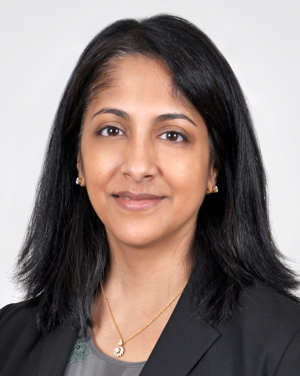 “I don’t like to give advice because I believe that we each find our own path in life, but I do try to lead by example,” says Reena Agrawal Sahni, a partner at Shearman & Sterling and head of the firm’s US Bank Regulatory practice. “And that is important to me because I have learned from watching the examples set by others.”
“I don’t like to give advice because I believe that we each find our own path in life, but I do try to lead by example,” says Reena Agrawal Sahni, a partner at Shearman & Sterling and head of the firm’s US Bank Regulatory practice. “And that is important to me because I have learned from watching the examples set by others.”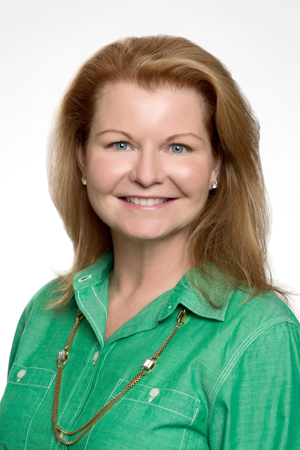 “Your career is a marathon not a sprint,” says Citi’s Leslie McNamara. “I spent my early years focusing on a vertical career path and how I could achieve the next level, but over the course of my career, I’ve learned it’s been the horizontal moves that expanded my horizons the most and helped me develop entirely new networks that have paid off.”
“Your career is a marathon not a sprint,” says Citi’s Leslie McNamara. “I spent my early years focusing on a vertical career path and how I could achieve the next level, but over the course of my career, I’ve learned it’s been the horizontal moves that expanded my horizons the most and helped me develop entirely new networks that have paid off.”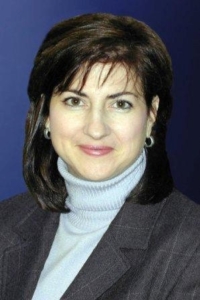
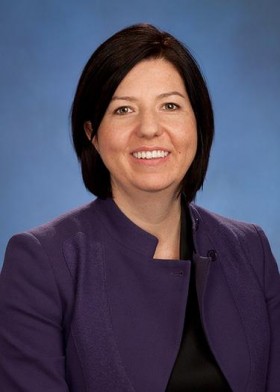 Recently Sinead Strain, who heads Goldman Sachs’ fixed income, currencies and commodities (FICC) technology, had the opportunity to share her career trajectory with young women who were visiting the firm as part of the Girls Who Code initiative.
Recently Sinead Strain, who heads Goldman Sachs’ fixed income, currencies and commodities (FICC) technology, had the opportunity to share her career trajectory with young women who were visiting the firm as part of the Girls Who Code initiative.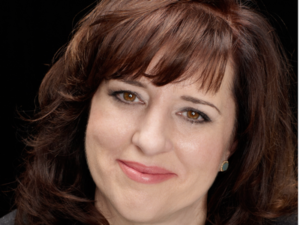 For Mary McDowell, the secret to a fulfilling career is finding a work environment that works for you. “You’re going to work a lot, and work hard. Make sure you choose a career path that you are passionate about and that you’re working with people who bring out your best. You are going to spend a lot of time with them and the more you like them, the better your experience will be. Life is too short to work with jerks.”
For Mary McDowell, the secret to a fulfilling career is finding a work environment that works for you. “You’re going to work a lot, and work hard. Make sure you choose a career path that you are passionate about and that you’re working with people who bring out your best. You are going to spend a lot of time with them and the more you like them, the better your experience will be. Life is too short to work with jerks.”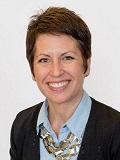 This simple, but powerful phrase has been the mantra of Lori Fellela, senior director at TIAA-CREF. “I’ve been fortunate throughout my career to have leaders who’ve given me feedback and the opportunity to take on more challenges, and part of that is because I have been the person who has stepped up and said ‘I’ll take it.’ It’s crucial to raise your hand and volunteer for the projects no one else wants, to get yourself outside of your comfort zone – that is how you’ll get to your next role,” says Fellela.
This simple, but powerful phrase has been the mantra of Lori Fellela, senior director at TIAA-CREF. “I’ve been fortunate throughout my career to have leaders who’ve given me feedback and the opportunity to take on more challenges, and part of that is because I have been the person who has stepped up and said ‘I’ll take it.’ It’s crucial to raise your hand and volunteer for the projects no one else wants, to get yourself outside of your comfort zone – that is how you’ll get to your next role,” says Fellela.